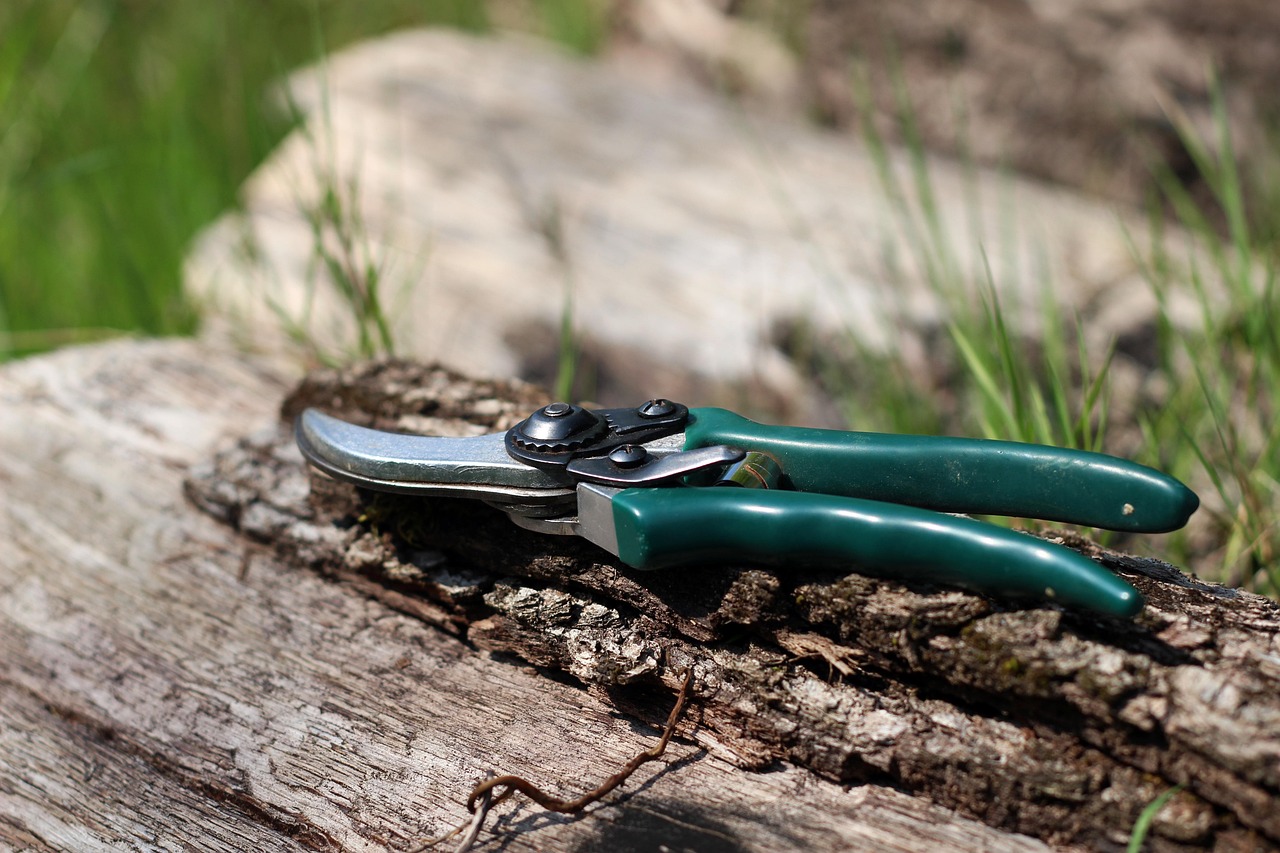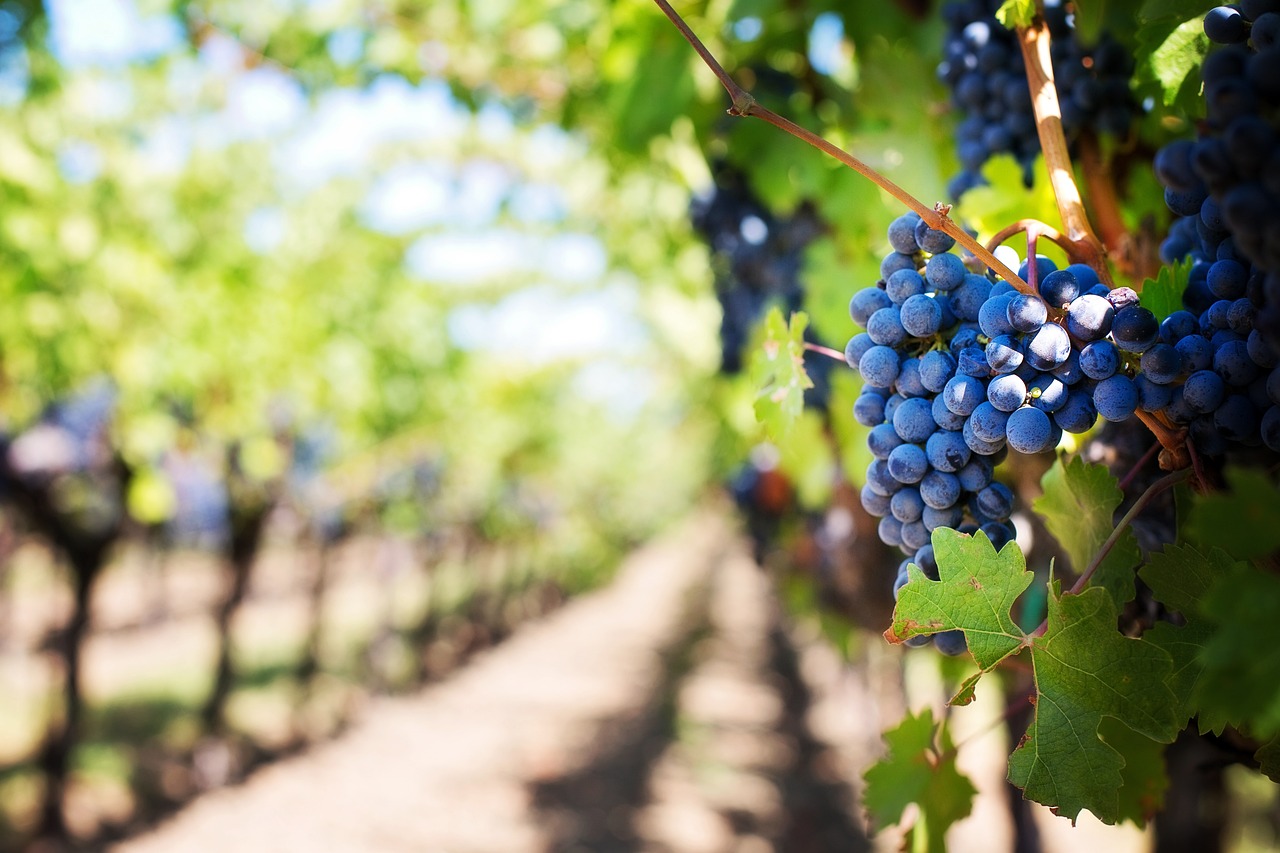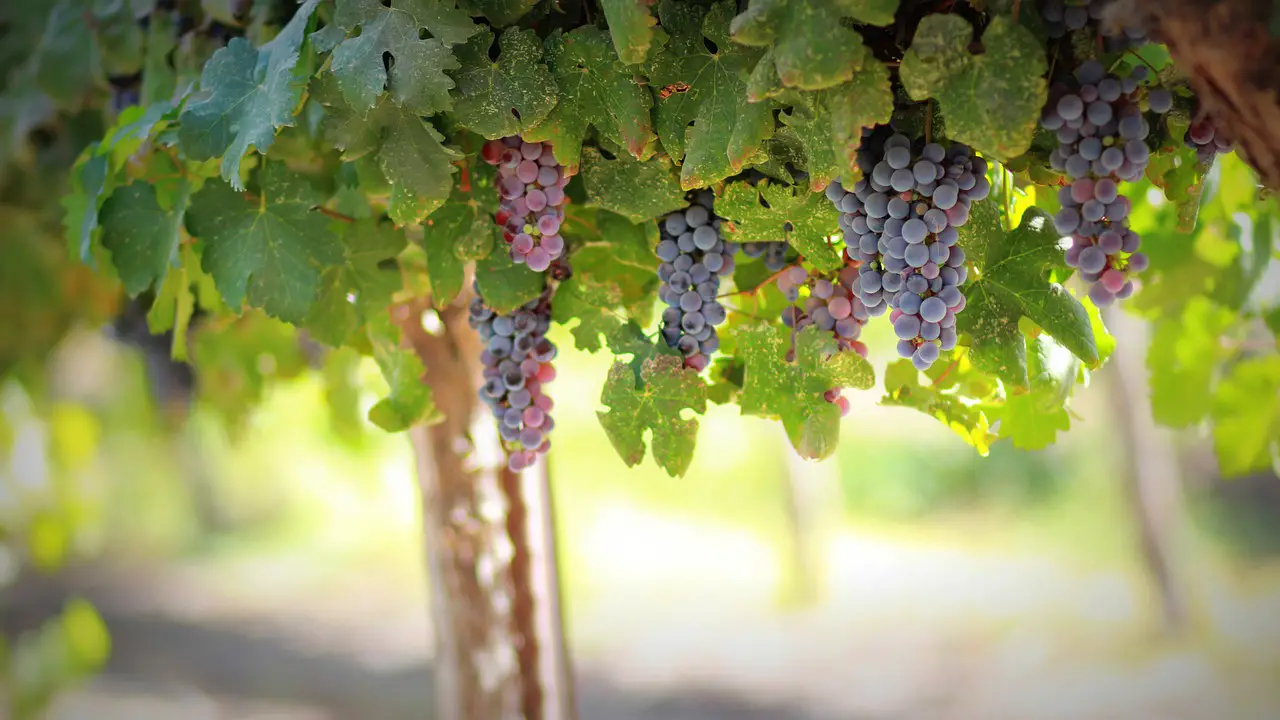Grapevine pruning for small-scale vineyards is crucial for maintaining vine health, maximizing yield, and improving grape quality. Proper pruning techniques can enhance air circulation, sunlight exposure, and reduce disease risk, ultimately leading to a successful harvest.
For small-scale vineyard owners, understanding the importance of pruning is essential. Pruning is not just about cutting back branches; it is an art and science that directly affects the growth and productivity of grapevines. When done correctly, pruning can promote a balanced vine structure, allowing each vine to produce high-quality grapes.

During the growing season, grapevines can become dense and unruly. This overgrowth can lead to several issues, such as poor air circulation and increased susceptibility to pests and diseases. Additionally, excessive foliage can shade grapes, reducing their ripening potential. Therefore, effective pruning is a necessary practice that helps manage vine growth and improves overall vineyard health.
Understanding the Basics of Pruning
Before diving into specific techniques, it’s important to understand some basic concepts related to grapevine biology. Grapevines grow from buds that form on last year’s wood. Each bud has the potential to produce new shoots, leaves, and grapes. The challenge for vineyard managers is to decide which buds to keep and which to remove during pruning.
There are several key reasons why pruning is performed:

- Encourage Growth: Pruning stimulates new growth and helps shape the vine.
- Control Yield: It allows growers to manage the amount of fruit each vine produces.
- Enhance Quality: Proper pruning improves grape quality by ensuring better sunlight exposure.
- Promote Health: Removing old or diseased wood reduces the risk of pests and disease.
Pruning should be done at specific times of the year, primarily during the dormant season in late winter or early spring. This period is ideal because the vines are not actively growing, making it easier to see their structure without foliage obstructing the view.
Types of Pruning Techniques
There are mainly two types of pruning: cane pruning and spur pruning. Each technique has its own advantages and is suitable for different grape varieties and vineyard styles.
Cane Pruning
Cane pruning involves selecting one or two long canes from the previous year’s growth. These canes are typically 6 to 12 buds long. The remaining wood is removed. Cane pruning is beneficial for varieties that produce grape clusters at the ends of shoots. This method allows for better air circulation and sunlight penetration.

Spur Pruning
Spur pruning, on the other hand, involves cutting back the previous year’s growth to short spurs that have 1 to 3 buds each. This method is often used for varieties that bear fruit closer to the trunk or main arms of the vine. Spur pruning can be quicker and easier than cane pruning, making it suitable for small-scale vineyards.
Tools for Effective Pruning
Having the right tools is essential for efficient and effective grapevine pruning. Below is a list of commonly used tools:
- Hand Pruners: Ideal for making clean cuts on small branches.
- Loppers: Useful for cutting thicker branches that cannot be handled by hand pruners.
- Saws: Necessary for larger cuts on older vines or thick trunks.
- Gloves: Protect hands from thorny vines and sharp tools.
Using sharp tools ensures clean cuts, which facilitates quicker healing and reduces the risk of disease entering through wounds. Regularly maintaining your tools will make the pruning process smoother and more efficient.

The Importance of Timing
Timing is critical in grapevine pruning. As mentioned earlier, pruning should be performed during the dormant season. However, specific factors can affect the timing:
- Climate: Regions with harsher winters may require earlier pruning to prevent damage from severe cold.
- Varietal Characteristics: Some grape varieties may respond better to late winter versus early spring pruning.
- Aiming for Bud Break: Pruning too late can result in excessive growth before bud break, affecting fruit quality.
Monitoring weather conditions can also help determine the best time to prune. Keeping an eye on temperature fluctuations will guide you in deciding when your vines are ready for this essential practice.
Pruning Techniques for Different Vine Varieties
Understanding the specific needs of different grapevine varieties is essential for successful pruning. Each variety has unique growth patterns and fruiting characteristics. This section explores how to prune popular vine varieties effectively.
Common Grape Varieties and Their Pruning Needs
Here is a brief overview of several common grape varieties and their specific pruning techniques:
| Grape Variety | Pruning Method | Notes |
|---|---|---|
| Cabernet Sauvignon | Cane Pruning | Encourages cluster growth on the ends of shoots. |
| Chardonnay | Spur Pruning | Produces high yields with short spurs. |
| Merlot | Cane Pruning | Promotes quality fruit through careful shoot selection. |
| Zinfandel | Spur Pruning | Helps manage vigorous growth and enhances air circulation. |
| Sauvignon Blanc | Cane Pruning | Aims for balanced fruit exposure and quality. |
As indicated in the table, Cabernet Sauvignon and Merlot benefit from cane pruning due to their growth patterns. In contrast, Chardonnay and Zinfandel respond well to spur pruning. When selecting a variety for your vineyard, consider these characteristics to optimize your pruning approach.
Pruning for Different Training Systems
The training system you choose for your grapevines also influences your pruning strategy. Different systems require distinct approaches to maintain vine health and productivity.
Vertical Shoot Positioning (VSP)
The VSP system is popular for many vineyards. It involves training the vine shoots upward, allowing sunlight to reach all parts of the vine. When pruning VSP vines, focus on:
- Removing excess shoots that grow horizontally to prevent shading.
- Maintaining a balance between fruit-bearing canes and foliage.
- Ensuring airflow around clusters to reduce disease risk.
Geneva Double Curtain (GDC)
The GDC system allows for more fruit exposure by creating two curtain-like rows of shoots. When pruning under this system, consider the following:
- Cut back each arm to maintain an even number of spurs along the curtain.
- Ensure that the canopy does not become too dense, promoting good airflow.
- Remove any overlapping or shaded shoots to enhance light penetration.
Common Mistakes to Avoid When Pruning
Even experienced vineyard managers can make mistakes during pruning. Here are some common pitfalls to watch out for:
- Pruning Too Early or Late: Timing is crucial. Pruning too early can expose vines to frost damage, while late pruning may lead to excessive growth.
- Over-Pruning: Removing too many buds can severely reduce yield and affect grape quality. Aim for balance.
- Poor Cuts: Making jagged or improper cuts can lead to disease entry points. Always use sharp, clean tools.
- Ineffective Canopy Management: Neglecting canopy management can result in poor air circulation and shading of fruit clusters.
Avoiding these mistakes will help maintain vine health and improve overall productivity in your vineyard.
Post-Pruning Care
After pruning, it is important to care for your vines properly. This care will aid healing and enhance growth throughout the season. Consider the following post-pruning practices:
- Monitor for Pests and Diseases: After pruning, inspect your vines regularly for signs of pests or diseases that may take advantage of the fresh cuts.
- Water Management: Ensure that your vines receive adequate water during the growing season, especially after pruning when they are recovering from cuts.
- Nutrient Supply: Apply fertilizers if necessary to support new growth and fruit development.
- Mulching: Consider applying mulch around the base of your vines to retain moisture and suppress weeds.
Implementing these practices will help ensure that your vines thrive after pruning, leading to a more fruitful harvest later in the season.
The Role of Observation in Pruning
An often-overlooked aspect of successful pruning is careful observation. Taking time to observe your vines throughout the season can provide valuable insights into their health and growth patterns. Here are some tips for effective observation:
- Regular Check-Ins: Visit your vineyard frequently to monitor vine health, leaf canopy, and overall growth.
- Document Changes: Keep notes on what works well and what doesn’t as you adjust your pruning techniques over time.
- Engage with Other Growers: Sharing experiences with fellow vineyard owners can provide new ideas and methods that may enhance your own practices.
The more you observe and learn about your vines, the better equipped you will be to make informed decisions during future pruning sessions.
Seasonal Pruning Tasks and Maintenance
After the main pruning tasks are completed, there are several seasonal maintenance activities that vineyard owners should undertake to ensure the health and productivity of their grapevines. These tasks help in nurturing the vines throughout the growing season.
Spring Maintenance
As the vines begin to wake from dormancy in early spring, the following tasks are essential:
- Remove Winter Debris: Clear any fallen leaves, branches, or other debris from around the base of the vines. This helps prevent pests and diseases that can thrive in decaying matter.
- Check for Damage: Inspect each vine for signs of winter damage, including broken branches or buds. Remove any damaged wood to promote healthy growth.
- Fertilization: Apply a balanced fertilizer to support new growth. Make sure to follow soil test recommendations for nutrient needs.
- Irrigation Setup: Ensure that your irrigation system is functioning properly as the growing season begins. Adequate water supply is crucial for vine health.
Summer Care
During the summer months, your vines will be in full growth mode. It’s important to monitor their health closely:
- Canopy Management: Regularly trim back excessive foliage to allow sunlight to reach the fruit clusters. This improves grape ripening and reduces disease risk.
- Pest and Disease Monitoring: Check for any signs of pests or diseases on a weekly basis. Early detection can prevent larger issues later.
- Watering Practices: Adjust irrigation practices based on weather conditions. Avoid over-watering, as this can lead to root rot.
- Support Structures: Ensure that trellises and other support structures are secure. They must be able to withstand the weight of the growing vines and fruit.
Fall Preparation
As the harvest season approaches, preparation becomes key. The following tasks should be performed:
- Harvest Monitoring: Regularly check grape maturity to determine the best time for harvest. Tasting grapes can help assess their readiness.
- Post-Harvest Care: After harvesting, remove any remaining fruit from the vines to reduce pest attraction and disease risk.
- Soil Testing: Conduct soil tests post-harvest to evaluate nutrient levels and prepare for next season’s fertilization strategy.
- Prepare for Dormancy: Begin preparations for winter by ensuring that vines are healthy and ready for dormancy. This includes additional pruning if necessary.
Understanding Vine Health Indicators
Recognizing signs of vine health is critical in managing a vineyard effectively. Healthy vines exhibit certain characteristics, while poor health may present various symptoms.
Indicators of Healthy Vines
Healthy grapevines will typically show the following signs:
- Lush Foliage: Leaves should be vibrant green and free from discoloration or spots.
- Strong Growth: New shoots should grow vigorously during the spring and summer months.
- Buds Full of Life: Buds should swell and burst open in the spring. Dead or dried-up buds indicate poor health.
- Even Fruit Set: A uniform set of fruit clusters indicates good pollination and vine health.
Signs of Stress or Poor Health
If your vines are experiencing stress or other health issues, look for these warning signs:
- Pale or Yellow Leaves: This may indicate nutrient deficiencies, specifically nitrogen or iron.
- Curling Leaves: Leaves that curl may point to pests such as aphids or environmental stress due to lack of water.
- Poor Fruit Development: If clusters are small or not developing properly, it may signal issues with pollination or vine health.
- Disease Symptoms: Watch for fungal infections or other diseases that manifest as spots, wilting, or decay on leaves and fruit.
Pest and Disease Management
Effective pest and disease management is vital to maintaining healthy grapevines. Understanding common threats will help you take proactive measures.
Common Pests
The following pests are commonly found in vineyards and can cause significant damage if not managed properly:
- Aphids: Small insects that feed on sap, leading to stunted growth and leaf curling.
- Spider Mites: These tiny pests can cause yellowing leaves and webbing on plants.
- Grape Berry Moth: Larvae feed on grape berries, causing rot and loss of quality.
- Leafhoppers: These insects can transmit diseases while feeding on vine sap.
Disease Management Strategies
Diseases can also pose serious threats to your vineyard. Some common diseases include:
- Powdery Mildew: A fungal disease characterized by white powdery spots on leaves and fruit.
- Downy Mildew: Another fungal disease that causes yellow spots on leaves with a downy growth underneath.
- Crown Gall: A bacterial disease causing galls on roots and stems, leading to poor growth and vigor.
The following management strategies can help mitigate pest and disease issues:
- Cultural Practices: Implement good vineyard hygiene by removing debris and maintaining proper spacing between vines to improve airflow.
- Pesticide Application: Use integrated pest management (IPM) practices to apply pesticides judiciously, minimizing harm to beneficial insects.
- Regular Monitoring: Conduct routine inspections to catch any issues early before they escalate into larger problems.
Your diligence in monitoring and maintaining vine health will significantly impact the success of your small-scale vineyard operation.
Advanced Techniques for Enhanced Pruning
As you gain experience in grapevine pruning, you may want to explore advanced techniques that can further optimize the growth and yield of your small-scale vineyard. These techniques require a deeper understanding of vine biology and the specific needs of your grape varieties.
Precision Pruning
Precision pruning focuses on selecting the optimal number of buds based on the vine’s condition and the expected yield. This method considers factors such as:
- Vine Age: Older vines may need fewer buds to maintain fruit quality.
- Environmental Conditions: Assessing soil health and moisture levels can guide how many buds to retain.
- Previous Yield Data: Analyzing past harvest yields helps in determining the right balance for future seasons.
Canopy Management Techniques
Effective canopy management is crucial for maximizing sunlight exposure and air circulation. Advanced techniques include:
- Leaf Removal: Selectively removing leaves around clusters can improve sunlight exposure and enhance ripening.
- Canopy Thinning: Reducing the overall density of the canopy allows for better airflow, reducing disease risk.
- Trellising Adjustments: Adjusting trellising systems can improve light penetration and support vine growth.
These techniques require careful planning and observation to implement successfully, but they can significantly enhance grape quality and yield.
Utilizing Technology in Pruning Practices
Modern technology has made significant strides in agriculture, including vineyard management. Utilizing technology can aid in decision-making throughout the pruning process.
Drones and Aerial Imaging
Drones equipped with high-resolution cameras can provide invaluable data on vine health and growth patterns. Aerial imaging can help you:
- Identify Stress Areas: Visualize parts of the vineyard that may be underperforming due to pests or diseases.
- Map Growth Variability: Understand how different sections of your vineyard respond to various treatments.
- Plan Maintenance Activities: Create targeted plans for irrigation, fertilization, and pruning based on aerial insights.
Mobile Apps for Vineyard Management
Many mobile applications are available for vineyard management that can assist in tracking growth patterns, pest detection, and weather conditions. These tools enable you to:
- Document Pruning Activities: Keep records of what was pruned, when, and any observations made during the process.
- Monitor Weather Conditions: Stay updated on forecasts that can affect vine health and growth.
- Analyze Data Trends: Review historical data to make informed decisions for future pruning practices.
Sustainability in Vineyard Management
Sustainable practices are becoming increasingly important in agriculture, including viticulture. Implementing sustainable methods in your vineyard can benefit both the environment and your grape production.
Organic Practices
Transitioning to organic practices involves avoiding synthetic fertilizers and pesticides. Instead, consider:
- Composting: Utilize organic waste to create nutrient-rich compost for soil health.
- Natural Pest Controls: Introduce beneficial insects or use natural repellents to manage pests.
- Crop Rotation: Implementing crop rotation can help improve soil fertility and reduce disease pressure.
Water Management
Efficient water management is essential in maintaining a sustainable vineyard. Consider implementing:
- Drip Irrigation: This system allows for targeted watering directly at the root zone, minimizing waste.
- Rainwater Harvesting: Collecting rainwater for irrigation reduces reliance on municipal water sources.
- Soil Moisture Sensors: These devices can provide real-time data on soil moisture levels, helping to optimize irrigation timing.
Final Thoughts
The art of grapevine pruning is a vital aspect of maintaining a successful small-scale vineyard. By understanding the biology of your vines, employing effective pruning techniques, and incorporating modern technology into your practices, you can enhance both the quality and quantity of your grape production. Each season presents new challenges and opportunities for learning, making continuous observation and adaptation essential.
Sustainability should also be at the forefront of your vineyard management practices. By focusing on environmentally friendly methods, you not only contribute positively to the ecosystem but also ensure the long-term viability of your vineyard. With diligence, knowledge, and a passion for viticulture, you can cultivate a thriving vineyard that produces exceptional grapes year after year.
